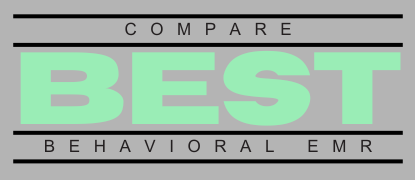Transitioning your behavioral health practice to a new electronic medical records (EMR) system can feel overwhelming. After all, your EMR is at the core of your daily operations, from patient documentation to billing and scheduling. However, with the right preparation and strategy, a behavioral health EMR transition can be smooth, minimally disruptive, and ultimately beneficial for your clinicians, staff, and patients. This guide will walk you through the essential steps to ensure your practice experiences a successful EMR migration.
Why Behavioral Health Practices Switch EMR Systems
Behavioral health practices often decide to switch their EMR systems due to various reasons, including:
- Limited Functionality: Their current system lacks specialized behavioral health documentation tools and workflows.
- Poor User Experience: Clinicians and administrative staff struggle with usability issues, impacting productivity and increasing frustration.
- Compliance Concerns: The existing EMR does not adequately support changing regulatory requirements like HIPAA or telehealth documentation standards.
- Scalability and Growth: The practice has outgrown the current EMR solution, limiting overall growth and efficiency.
Whatever your reasons, transitioning to a new EMR can dramatically improve your practice operations, efficiency, compliance, and overall patient experience.
Step-by-Step Guide to a Successful Behavioral Health EMR Transition
1. Establish Clear Objectives and Requirements
Before beginning your EMR transition, gather your leadership team and clinical staff to clearly define what your practice needs from your new behavioral health EMR. Consider factors such as:
- Documentation capabilities specialized for behavioral health (e.g., treatment plans, progress notes, outcome measures).
- Integrated practice management features, including scheduling, billing, and reporting.
- Regulatory compliance, including HIPAA security measures and telehealth support.
- Ease of use and user satisfaction ratings from other behavioral health practices.
2. Choose the Right EMR Vendor
Once you’ve clearly defined your requirements, you’re ready to select a vendor. Take your time to carefully evaluate vendors based on:
- Behavioral health specialization and expertise.
- Reputation and reviews from other behavioral health practices.
- Implementation process and the level of training and support provided.
- Data migration assurances to ensure patient records transfer safely and smoothly.
If you’re unsure how to choose between vendors, consider conducting a free practice analysis to receive tailored recommendations from EMR experts.
3. Assemble a Transition Team
A successful transition requires collaboration. Assemble a dedicated EMR migration team within your practice, including:
- A project manager to oversee timelines and communication.
- Clinical champions who understand daily workflow and can advocate for clinical needs.
- Administrative personnel familiar with billing, scheduling, and reporting needs.
- IT support or an external consultant to manage technical aspects of the migration.
4. Plan and Execute Data Migration Carefully
Patient data migration is a critical step in your behavioral health EMR transition. Work closely with your new EMR vendor to ensure:
- All essential patient records, treatment plans, and billing histories are accurately transferred.
- Data security and patient privacy measures are in place throughout the migration.
- A plan is established to handle potential issues or inaccuracies promptly.
For more on maintaining compliance when migrating EMRs, review this helpful guide: HealthIT.gov’s HIPAA Privacy and Security Resources.
5. Invest in Thorough Training and Support
A smooth EMR transition requires thorough training. Your vendor should provide comprehensive, role-based training tailored to your behavioral health practice. Consider:
- Hands-on clinician training to ensure comfort with documentation workflows.
- Specialized administrative training on billing, scheduling, and reporting.
- Ongoing support, including access to help desks and online resources.
Proper training significantly reduces frustration, improves adoption rates, and ensures your team is confident using the new EMR.
6. Monitor Progress and Solicit Feedback
After your EMR goes live, closely monitor your practice operations. Regularly solicit feedback from clinicians and administrative staff. Early identification of issues allows for quick resolution and ensures your new system meets your practice’s needs.
Common Pitfalls to Avoid During a Behavioral Health EMR Transition
- Inadequate Planning: Insufficient planning leads to frustration and lost productivity.
- Rushing the Process: A hurried implementation can cause data inaccuracies and staff resistance.
- Underestimating Training Needs: Insufficient training impacts user adoption and satisfaction.
By acknowledging these pitfalls beforehand, your practice can proactively plan to avoid them and ensure a smoother transition.
Conclusion: Making the Move to Your New Behavioral Health EMR
While switching your behavioral health EMR system is a significant undertaking, thorough planning, careful vendor selection, and attentive execution result in a successful transition. A well-chosen, properly implemented EMR solution can streamline operations, enhance compliance, and ultimately lead to better patient outcomes. If you’re ready to find the best EMR fit for your practice, start by getting your personalized recommendations through our free practice analysis.
Meta description: Discover a step-by-step guide for a smooth behavioral health EMR transition, including vendor selection, data migration, training, and avoiding common pitfalls.
